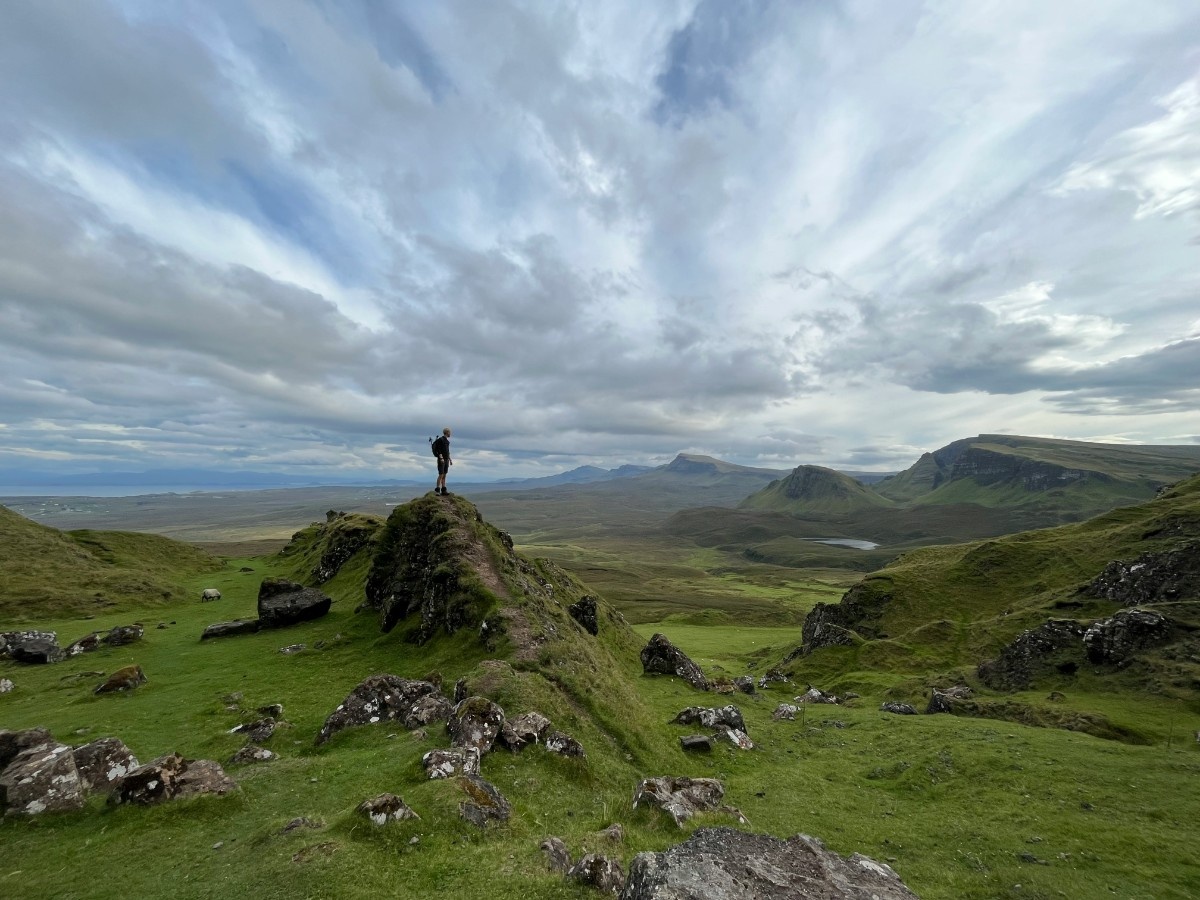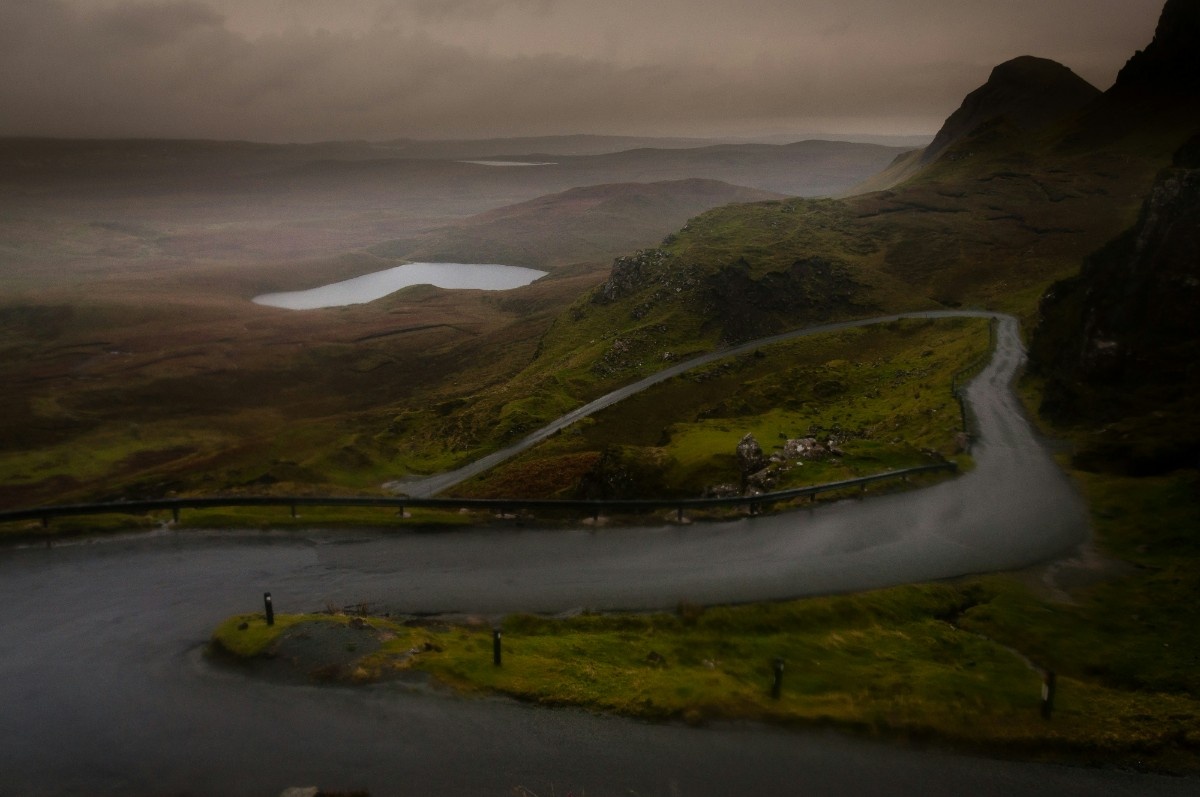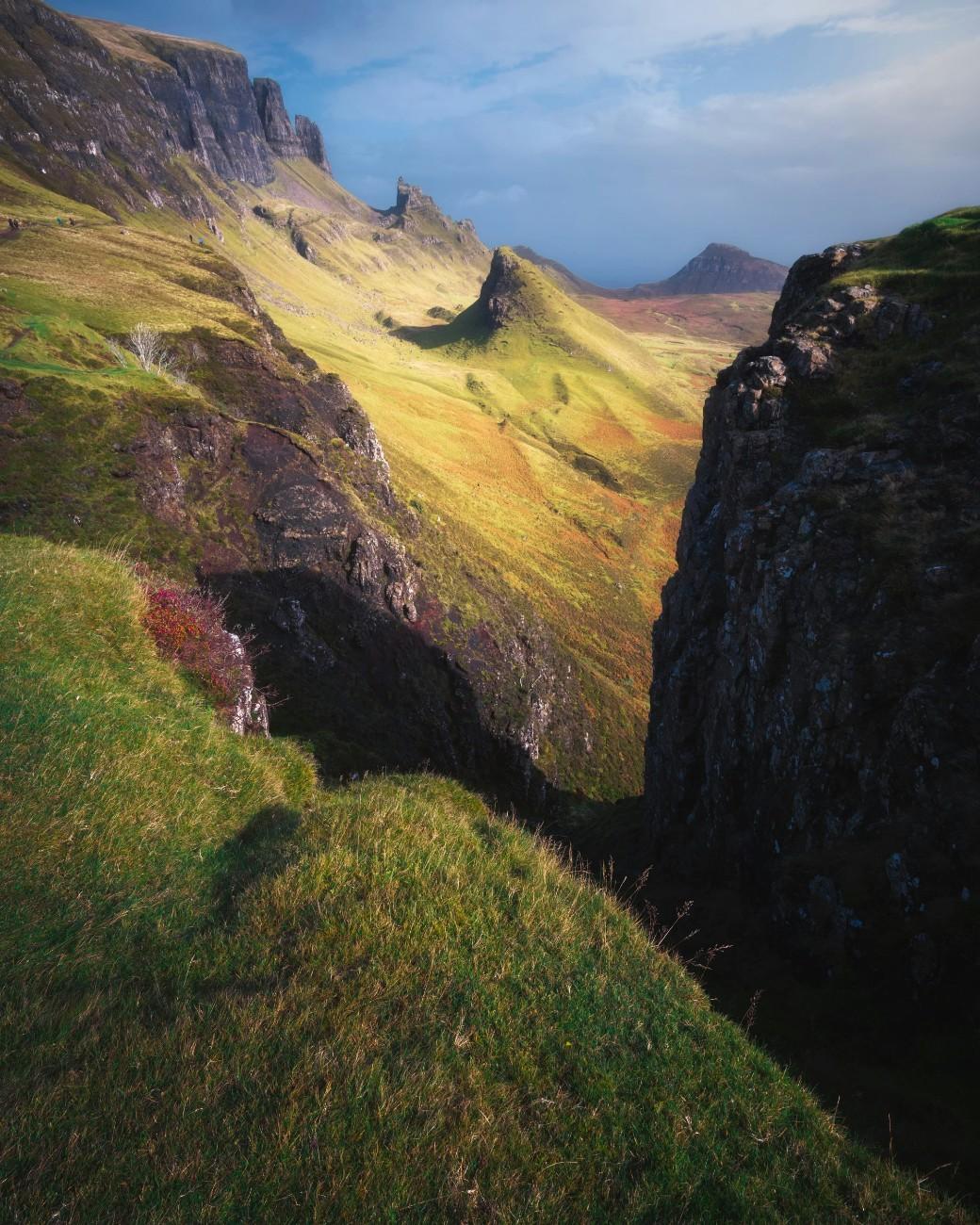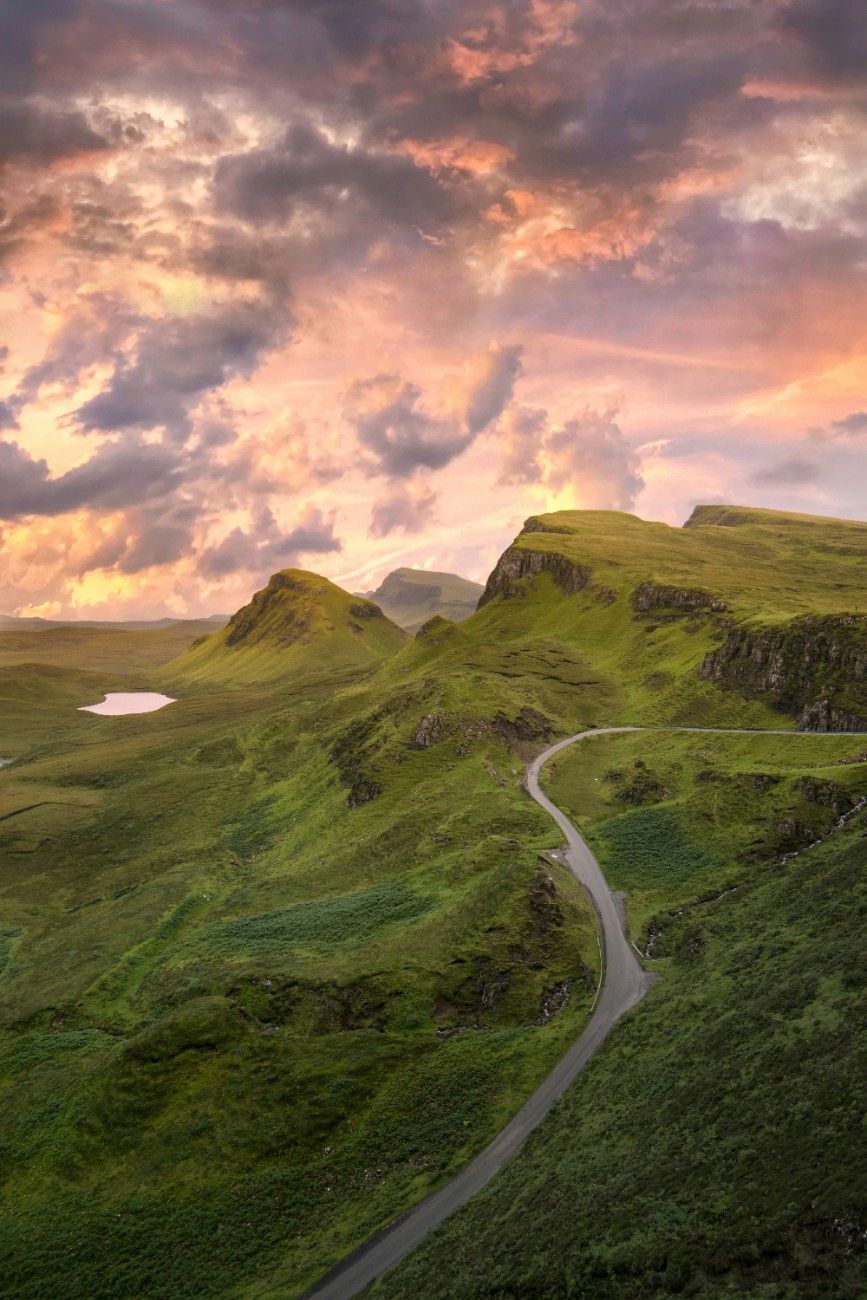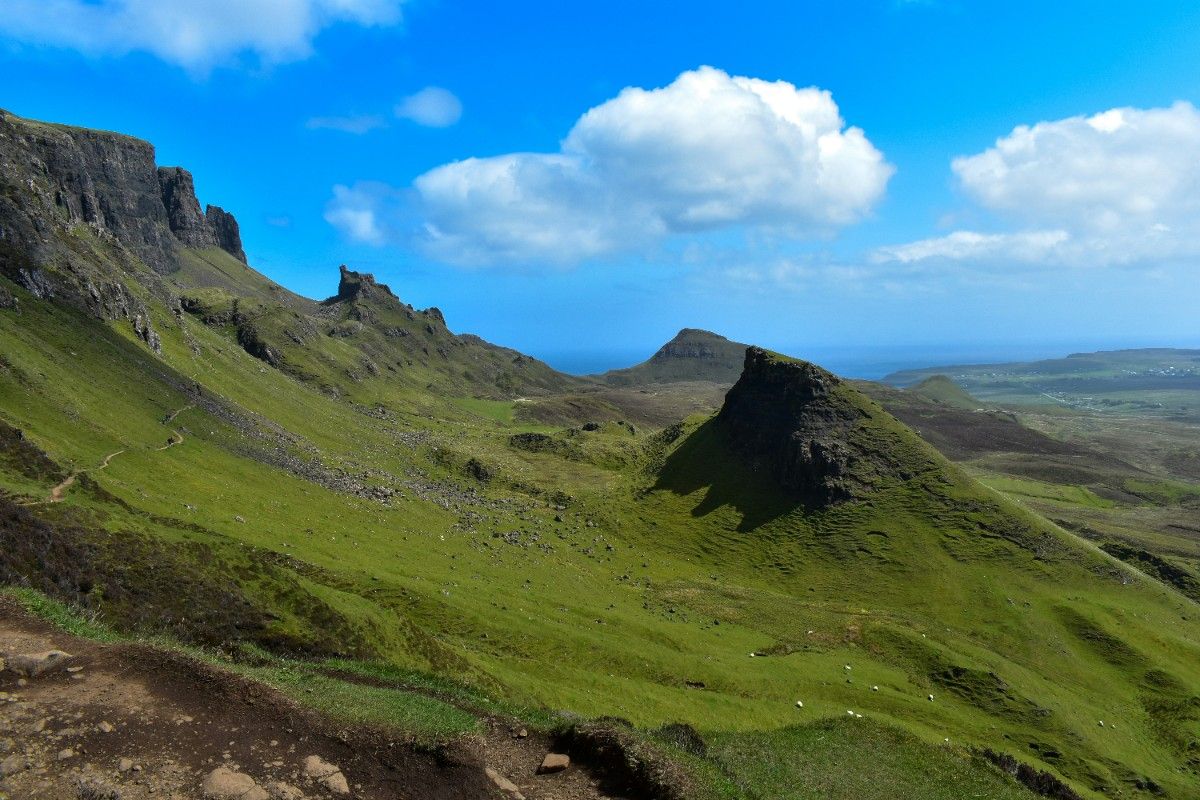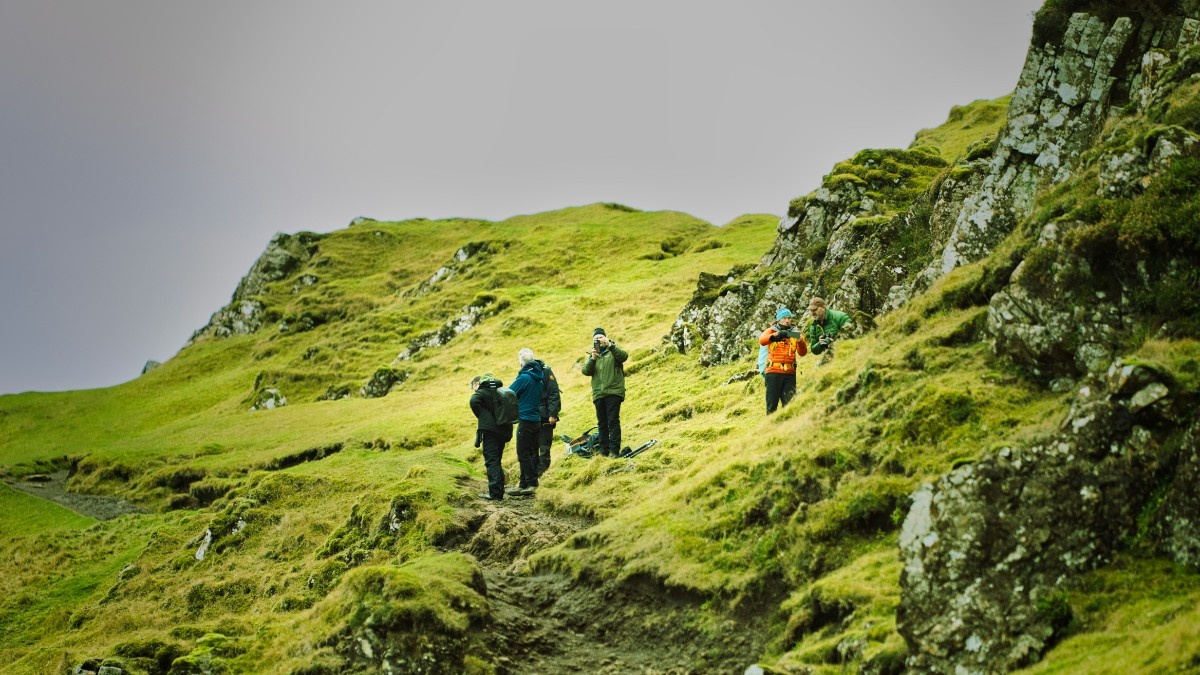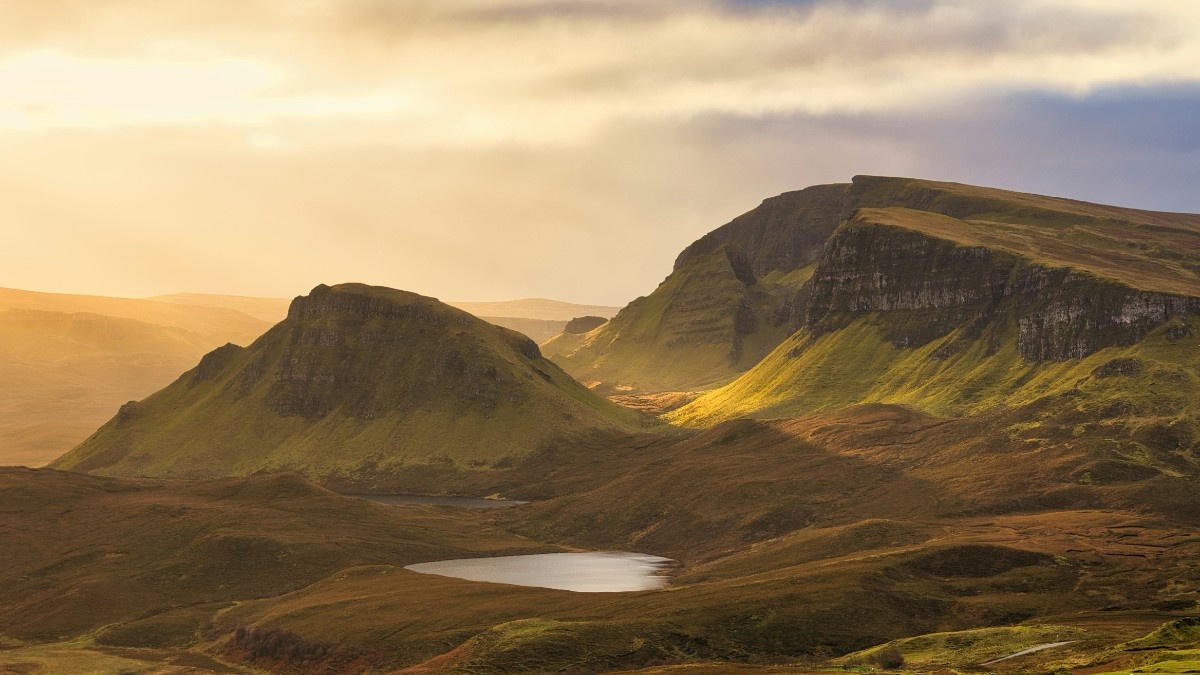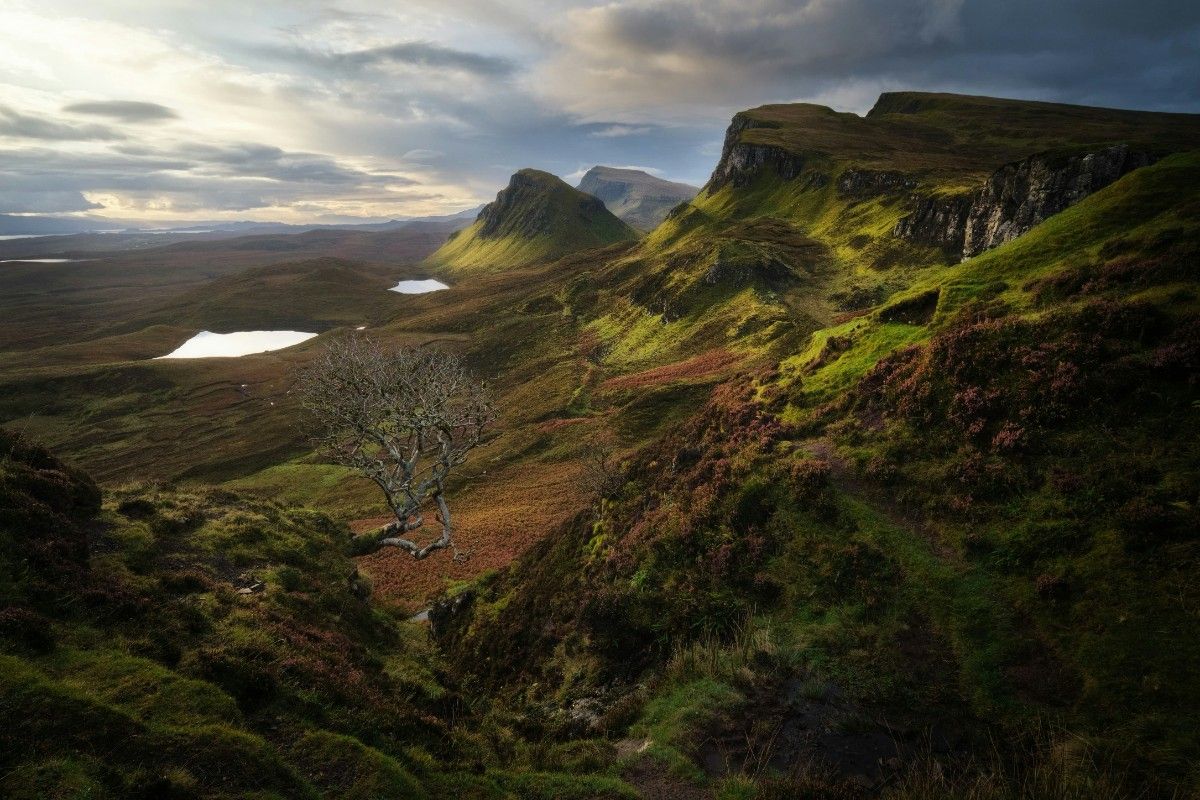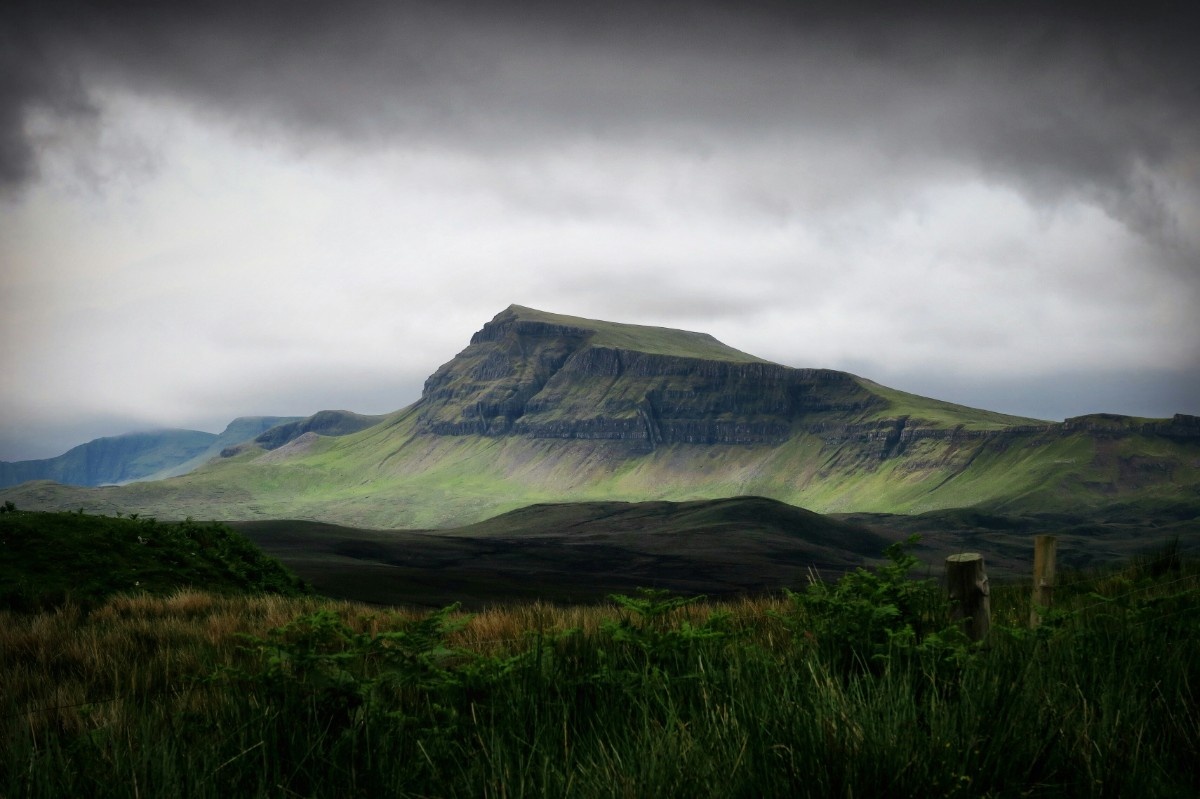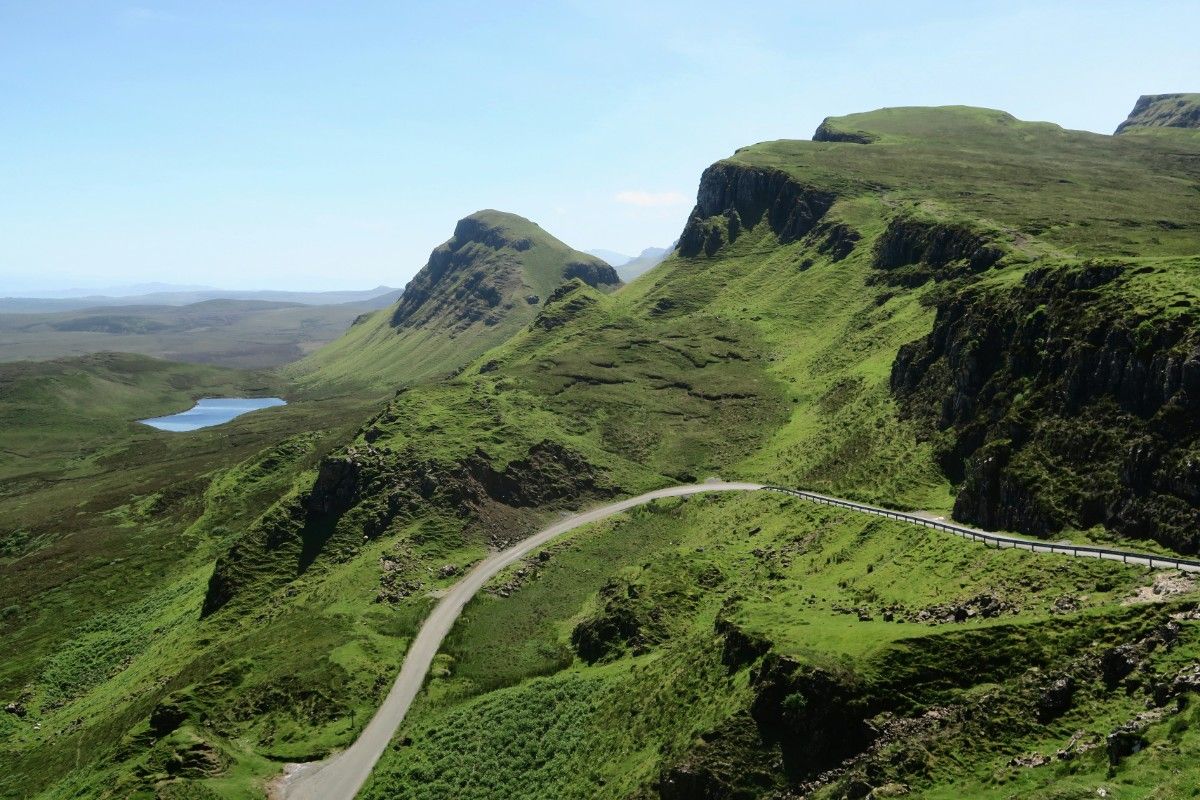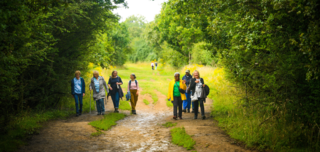Discovering the Enchanting Quiraing on the Isle of Skye
A Landscape Like No Other
The Quiraing, Isle of Skye is a breathtaking destination that beckons adventurers and nature lovers from across the globe. This awe-inspiring geological formation, situated on the northernmost tip of the island, is part of the Trotternish Ridge, a dramatic landscape sculpted by centuries of glacial activity and tectonic plate movements. The result is a surreal panorama of towering cliffs, sweeping valleys, and unique rock formations that seem to defy the laws of gravity. The Quiraing, Skye is a true testament to the raw power and beauty of nature, offering visitors a chance to immerse themselves in a landscape that is both otherworldly and deeply connected to the rich history and culture of the Scottish Highlands.
As you approach the Quiraing, Scotland, you'll be struck by the sheer scale and grandeur of the landscape. The distinctive outline of the Trotternish Ridge dominates the horizon, with its jagged peaks and plunging valleys creating a scene that looks like something out of a fantasy novel. The name "Quiraing" itself is derived from the Old Norse word "Kví Rand," which translates to "Round Fold," a reference to the unique shape of the landscape and its rich Viking heritage.
Iconic Landmarks and Features
One of the most iconic features of the Quiraing, Skye, Scotland is the "Old Man of Storr," a colossal, needle-like pinnacle that rises from the surrounding terrain like a sentinel standing guard over the landscape. This striking landmark has become a symbol of the Isle of Skye, drawing photographers and hikers from around the world who are eager to capture its otherworldly beauty.
Another notable feature of the Quiraing is the "Table," a flat-topped plateau that offers stunning panoramic views of the surrounding valleys and the shimmering waters of the Sound of Raasay. The "Prison," a towering rock formation that resembles a medieval fortress, is another must-see landmark, its imposing presence a testament to the powerful geological forces that have shaped this incredible landscape.
As you explore deeper into the Quiraing, you'll discover a world of hidden glens, cascading waterfalls, and lush green hillsides that are home to a diverse array of flora and fauna. From the vibrant purple heather that blankets the slopes in late summer to the elusive red deer that roam the high peaks, the Quiraing is a living, breathing ecosystem that is sure to capture your heart and imagination.
Planning Your Visit to the Quiraing
Getting There and Parking
The Quiraing is located on the Trotternish Loop, a popular driving route on the Isle of Skye that offers stunning views of the island's rugged coastline and dramatic mountain ranges. The most convenient way to reach the Quiraing is by car, as public transportation options are limited in this remote part of the island.
From the main town of Portree, head north on the A855 road, following the signs for Staffin. After approximately 20 miles (32 km), you'll reach the small village of Staffin, where you'll need to turn left onto a single-track road signposted for the Quiraing. Follow this road for another 2 miles (3.2 km) until you reach the Quiraing car park, which is located on the left side of the road.
It's important to note that the Quiraing car park can get very busy during peak season, especially during the summer months and on weekends. To avoid crowds and ensure a parking spot, it's best to arrive early in the morning or later in the afternoon. Alternatively, you can visit during the shoulder seasons of spring (April to May) or autumn (September to October) when the weather is still relatively mild, and the crowds are thinner.
What to Bring and Weather Considerations
When planning your visit to the Quiraing, it's essential to come prepared with the right gear and clothing. The weather on the Isle of Skye can be unpredictable, with sudden changes in temperature, wind, and precipitation common throughout the year.
To ensure a safe and enjoyable hike, make sure to bring sturdy, waterproof hiking boots with good traction, as the trails can be steep, rocky, and muddy in places. Layered clothing is also essential, as temperatures can vary significantly between the sunny valleys and the windswept peaks. A waterproof jacket and trousers are a must, as are a warm hat, gloves, and a spare pair of socks.
In addition to appropriate clothing, it's important to bring plenty of water and high-energy snacks to keep you fuelled throughout your hike. A map and compass (or GPS device) can also be useful for navigation, especially if you plan on exploring some of the more remote areas of the Quiraing.
Finally, don't forget to bring a camera to capture the stunning views and memories of your visit to this incredible landscape. Whether you're a professional photographer or simply an enthusiast, the Quiraing offers endless opportunities for breathtaking shots that will stay with you long after you've left the Isle of Skye.
Choosing the Right Trail
The Quiraing offers a range of hiking trails suitable for visitors of all skill levels and fitness abilities. The most popular route is the Quiraing circuit, a 4.2-mile (6.8 km) loop that takes you through the heart of the landscape, passing by iconic landmarks such as the "Old Man of Storr," the "Table," and the "Prison."
The Quiraing walk typically takes between 2-3 hours to complete, depending on your pace and the number of stops you make along the way to take in the views and snap photos. While the trail is well-maintained and clearly marked, it does involve some steep inclines and rocky sections, so a moderate level of fitness is recommended.
For those short on time or looking for a more leisurely experience, the Quiraing short walk is a great alternative. This 1.5-mile (2.4 km) out-and-back trail takes you to the "Table" viewpoint, offering stunning panoramic views of the surrounding landscape without the need for a strenuous hike.
Regardless of which trail you choose, it's important to stay on the designated paths and follow the principles of "Leave No Trace" to help protect this fragile ecosystem. By taking only photos, leaving only footprints, and disposing of waste properly, we can all do our part to ensure that the Quiraing remains a pristine and awe-inspiring destination for generations to come.
The Quiraing Trail: A Hiking Experience Like No Other
Embarking on the Journey
Hiking the Quiraing is an unforgettable experience that immerses you in the raw beauty and wonder of the Scottish Highlands. As you set out from the Quiraing car park, you'll be greeted by a well-maintained trail that winds its way through a landscape of towering cliffs, sweeping valleys, and unique rock formations that seem to defy the laws of gravity.
The first stage of the Quiraing route takes you through a lush green valley, where you'll be surrounded by the sights and sounds of nature. The gentle babbling of a nearby stream and the distant bleating of sheep create a peaceful soundtrack to your journey, while the vibrant purple heather and delicate wildflowers add splashes of colour to the verdant landscape.
As you continue along the Quiraing walk, the trail begins to climb steadily, leading you towards the iconic landmarks that make this hike so special. The first of these is the "Prison," a towering rock formation that resembles a medieval fortress. Its imposing presence is a testament to the powerful geological forces that have shaped this landscape over millions of years.
Reaching the Heart of the Quiraing
After passing the "Prison," the Quiraing route takes you deeper into the heart of this otherworldly landscape. The trail becomes steeper and more challenging, with rocky sections and narrow paths that require careful footing and a moderate level of fitness.
But the rewards are well worth the effort. As you climb higher, the views become increasingly breathtaking, with panoramic vistas of the surrounding valleys and the shimmering waters of the Sound of Raasay stretching out before you.
One of the highlights of the Quiraing walk is the "Table," a flat-topped plateau that offers a perfect spot for a picnic or a rest. From this vantage point, you can take in the full scope of the landscape, with its jagged peaks, plunging cliffs, and sweeping valleys creating a scene that looks like something out of a fantasy novel.
As you continue along the Quiraing circuit, you'll pass by other iconic landmarks such as the "Needle," a slender, spire-like rock that stands tall amidst the surrounding terrain, and the "Old Man of Storr," a colossal pinnacle that has become a symbol of the Isle of Skye.
The Final Stretch
The final stage of the Quiraing route takes you through a series of hidden glens and cascading waterfalls, where the landscape becomes even more enchanting and otherworldly. The trail here is less steep, allowing you to catch your breath and take in the beauty of your surroundings.
As you near the end of the Quiraing circuit, you'll pass through the "Prison Valley," a narrow gorge flanked by towering cliffs on either side. The sense of isolation and remoteness here is palpable, and it's easy to imagine the countless generations of Highlanders who have walked this same path before you.
Finally, the trail loops back towards the Quiraing car park, where you'll have a chance to reflect on the incredible journey you've just completed. Hiking the Quiraing is more than just a physical challenge; it's a chance to connect with the landscape, the history, and the culture of the Scottish Highlands in a way that few other experiences can match.
Geology and Formation of the Quiraing
A Landscape Shaped by Fire and Ice
The otherworldly landscape of the Quiraing is the result of a complex geological history that spans millions of years. The rocks that make up the Trotternish Ridge, of which the Quiraing is a part, are primarily composed of basalt, a dark, fine-grained volcanic rock that formed during the Paleocene epoch, approximately 55 million years ago.
At that time, the Isle of Skye was situated near the centre of a vast volcanic system known as the North Atlantic Igneous Province. This system was characterised by extensive volcanic activity, with massive outpourings of lava that covered much of the surrounding region. As the lava cooled and solidified, it formed thick layers of basalt, which would later be exposed through the processes of erosion and uplift.
But the story of the Quiraing's formation doesn't end there. The distinctive shapes and formations that make this landscape so unique are the result of a series of ancient landslides that occurred during the last ice age, around 10,000 years ago.
The Role of Glaciers and Landslides
As the glaciers that once blanketed the Isle of Skye began to retreat, they left behind a landscape that was fundamentally altered by their presence. The immense weight of the ice had compressed the underlying sedimentary rocks, which consisted of layers of sandstone, mudstone, and shale.
When the glaciers melted, the pressure on these rocks was released, causing them to expand and shift. This process, known as "glacial rebound," created weaknesses in the overlying basalt, making it more susceptible to erosion and landslides.
Over time, the constant freeze-thaw action of water seeping into cracks in the rock, combined with the relentless force of gravity, caused massive sections of the basalt to break away and slide downhill. This process, known as "rotational slumping," gave rise to the distinctive tilted formations that characterise the Quiraing, such as the "Table" and the "Prison."
The Continuing Evolution of the Landscape
Today, the processes that shaped the Quiraing continue to mould and reshape the landscape. The constant action of wind, rain, and frost erodes the softer sedimentary layers beneath the basalt, creating the towering cliffs and pinnacles that make this area so iconic.
At the same time, the rugged terrain and harsh weather conditions create a unique microclimate that supports a diverse array of flora and fauna. From the hardy grasses and heather that blanket the slopes to the elusive red deer that roam the high peaks, the Quiraing is a living, breathing ecosystem that is constantly adapting and evolving.
For geologists and nature lovers alike, the Quiraing is a fascinating window into the Earth's ancient past, as well as a reminder of the powerful forces that continue to shape our planet to this day. By understanding the complex processes that have formed this incredible landscape, we can gain a deeper appreciation for the natural world and the intricate web of life that it supports.
Flora and Fauna of the Quiraing
A Unique Ecosystem
The Quiraing may seem like a harsh and unforgiving landscape at first glance, but it is home to a surprising diversity of plant and animal life. The unique geology and microclimate of this area have created a mosaic of habitats that support a wide range of species, each adapted to the specific conditions found here.
From the windswept peaks to the sheltered valleys, the Quiraing is a true wilderness, where nature still reigns supreme. As you hike the Quiraing, you'll have the chance to discover some of the rare and fascinating creatures that call this place home, as well as the hardy plants that have evolved to thrive in this challenging environment.
The Plants of the Quiraing
One of the most striking features of the Quiraing's flora is the vibrant heather that blankets the hillsides during the late summer and early autumn months. The common heather (Calluna vulgaris) and bell heather (Erica cinerea) create a tapestry of purple and pink hues that contrast beautifully with the dark, brooding rocks.
But the heather is just one of the many plants that make up the Quiraing's unique ecosystem. Other notable species include the Scottish primrose (Primula scotica), a delicate, pink-flowered plant that is found nowhere else in the world, and the cushion pink (Silene acaulis), a low-growing plant that forms dense, spiny cushions to protect itself from the harsh winds and cold temperatures.
In the sheltered valleys and along the streams, you'll find a range of moisture-loving plants, such as the globeflower (Trollius europaeus) and the water avens (Geum rivale). These species add splashes of colour to the landscape and provide important food sources for the local wildlife.
The Animals of the Quiraing
The Quiraing is home to a diverse array of animal life, from the majestic red deer that roam the high peaks to the elusive otters that play in the streams and rivers. As you hike the Quiraing, keep an eye out for some of these incredible creatures, and you may be rewarded with a once-in-a-lifetime wildlife encounter.
One of the most iconic species found in the Quiraing is the golden eagle (Aquila chrysaetos), a magnificent bird of prey that can often be seen soaring high above the cliffs. With a wingspan of up to 2.2 metres (7.2 feet), these birds are a true symbol of the wild and untamed nature of the Scottish Highlands.
Other notable bird species found in the Quiraing include the red-throated diver (Gavia stellata), a sleek and elegant waterbird that breeds on the lochs and rivers of the area, and the ptarmigan (Lagopus muta), a hardy grouse that has adapted to life in the high mountains by changing its plumage to match the seasons.
Mammals are also well-represented in the Quiraing, with species such as the red fox (Vulpes vulpes), the European otter (Lutra lutra), and the pine marten (Martes martes) all making their home in the rugged terrain. These elusive creatures are rarely seen, but the knowledge of their presence adds an extra layer of excitement and wonder to any hike in the Quiraing.
The Quiraing's Place in Scottish History and Culture
Ancient Legends and Folklore
The Quiraing is a place steeped in history and legend, with stories and tales that have been passed down through generations of Scottish Highlanders. One of the most enduring legends associated with the Quiraing is that of the "Fairy Flag," a mystical banner that is said to have been gifted to the MacLeod clan by the fairies themselves.
According to the legend, the Fairy Flag has the power to summon the fairy host to the aid of the clan in times of need, and has been used in battle on several occasions throughout history. While the truth behind the legend may never be known, it speaks to the deep connection that the people of Skye have to the Quiraing and the surrounding landscape.
Another ancient legend associated with the Quiraing is that of the "Quiraing Needle," a towering pinnacle of rock that is said to be the home of a powerful witch. According to the tale, the witch would lure unsuspecting travellers to their doom with her enchanted singing, and many a brave warrior met their end at the base of the Needle.
These legends and tales are just a small part of the rich cultural heritage that surrounds the Quiraing. For centuries, this landscape has been a source of inspiration and awe for the people of Scotland, and its influence can be seen in everything from traditional music and art to contemporary literature and film.
Jacobite History and the Skye Boat Song
The Quiraing also plays a significant role in the history of the Jacobite Risings, a series of rebellions that took place in Scotland in the 17th and 18th centuries. During the 1745 Rising, Bonnie Prince Charlie and his Jacobite army used the Quiraing as a hideout and staging ground, taking advantage of the rugged terrain and natural defences of the area.
It was during this time that the famous "Skye Boat Song" was composed, a haunting melody that tells the story of Bonnie Prince Charlie's escape from the Isle of Skye following the defeat of the Jacobite army at the Battle of Culloden. The song has become an enduring symbol of Scottish cultural identity, and its lyrics evoke the wild beauty and untamed spirit of the Quiraing and the surrounding landscape.
Contemporary Culture and Tourism
Today, the Quiraing is a major tourist attraction and cultural landmark, drawing visitors from all over the world who come to marvel at its stunning beauty and unique geology. The area has been featured in countless films, television shows, and documentaries, and has inspired artists, writers, and musicians for generations.
Despite its growing popularity, the Quiraing remains a deeply sacred and spiritual place for many Scots, particularly those with ancestral ties to the Isle of Skye. For these individuals, hiking the Quiraing is not just a recreational activity, but a pilgrimage of sorts, a chance to connect with the land and the history of their people in a profound and meaningful way.
As tourism in the Quiraing continues to grow, it is important that visitors approach this landscape with respect and reverence, recognising its cultural and historical significance as well as its natural beauty. By doing so, we can ensure that the Quiraing remains a vital and enduring part of Scottish heritage for generations to come.
Preserving the Quiraing for Future Generations
Balancing Tourism and Conservation
As one of Scotland's most iconic and beloved landscapes, the Quiraing is a place of immense natural beauty and cultural significance. However, the growing popularity of the area among tourists and hikers has also brought with it a range of challenges and concerns, from erosion and habitat degradation to the impact of increased foot traffic on local communities and infrastructure.
To ensure that the Quiraing remains a pristine and awe-inspiring destination for generations to come, it is essential that we find a way to balance the demands of tourism with the need for conservation and responsible stewardship of the land.
One approach to achieving this balance is through the promotion of sustainable tourism practices, such as encouraging visitors to stay on designated trails, properly disposing of waste, and minimising their impact on the environment. This can be achieved through a combination of education, outreach, and infrastructure improvements, such as the creation of well-maintained hiking trails in the Quiraing and the provision of adequate facilities for waste disposal and sanitation.
Supporting Local Communities
As one of Scotland's most iconic and beloved landscapes, the Quiraing is a place of immense natural beauty and cultural significance. However, the growing popularity of the area among tourists and hikers has also brought with it a range of challenges and concerns, from erosion and habitat degradation to the impact of increased foot traffic on local communities and infrastructure.
To ensure that the Quiraing remains a pristine and awe-inspiring destination for generations to come, it is essential that we find a way to balance the demands of tourism with the need for conservation and responsible stewardship of the land.
One approach to achieving this balance is through the promotion of sustainable tourism practices, such as encouraging visitors to stay on designated trails, properly disposing of waste, and minimising their impact on the environment. This can be achieved through a combination of education, outreach, and infrastructure improvements, such as the creation of well-maintained hiking trails in the Quiraing and the provision of adequate facilities for waste disposal and sanitation.
Protecting Biodiversity and Habitats
Of course, preserving the Quiraing is not just about protecting its cultural and historical significance, but also its incredible biodiversity and unique habitats. The area is home to a wide range of rare and endangered species, from the elusive Scottish wildcat to the delicate and beautiful Scottish primrose.
To ensure that these species and their habitats are protected for generations to come, it is essential that we take a proactive and science-based approach to conservation and land management in the Quiraing. This can involve initiatives such as habitat restoration and enhancement, invasive species control, and monitoring and research to better understand the complex ecology of the area.
Engaging Future Generations
Finally, preserving the Quiraing for the future means engaging and inspiring the next generation of conservationists, scientists, and nature lovers. By providing opportunities for young people to experience and learn about this incredible landscape firsthand, we can foster a deep and lasting connection to the natural world that will serve as a foundation for a lifetime of stewardship and advocacy.
This can involve initiatives such as outdoor education programs, citizen science projects, and volunteer opportunities that allow young people to actively participate in the conservation and management of the Quiraing. By empowering future generations to take an active role in protecting this special place, we can ensure that its beauty, wonder, and significance endure for centuries to come.
Ultimately, preserving the Quiraing is a shared responsibility that requires the participation and commitment of all those who value and cherish this remarkable landscape. By working together to promote sustainable tourism, support local communities, protect biodiversity, and engage future generations, we can ensure that the Quiraing remains a vital and enduring part of Scotland's natural and cultural heritage for generations to come.
Related Articles

Let us know you agree to cookies
We use marketing, analytical and functional cookies as well as similar technologies to give you the best experience. Third parties, including social media platforms, often place tracking cookies on our site to show you personalised adverts outside of our website.
We store your cookie preferences for two years and you can edit your preferences via ‘manage cookies’ or through the cookie policy at the bottom of every page. For more information, please see our cookie policy.
